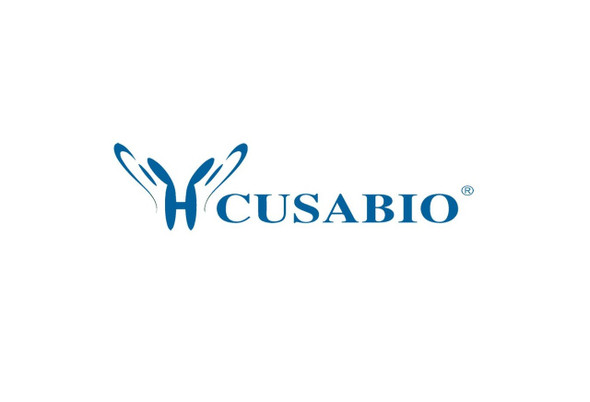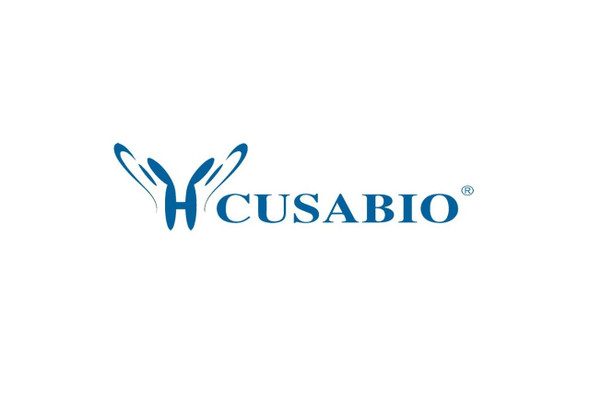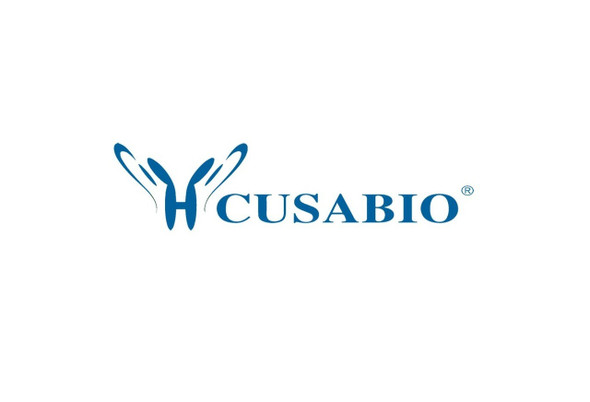Cusabio Human Recombinants
Recombinant Human Caveolin-3 (CAV3) | CSB-EP004573HU
- SKU:
- CSB-EP004573HU
- Availability:
- 13 - 23 Working Days
Description
Recombinant Human Caveolin-3 (CAV3) | CSB-EP004573HU | Cusabio
Alternative Name(s): M-caveolin
Gene Names: CAV3
Research Areas: Signal Transduction
Organism: Homo sapiens (Human)
AA Sequence: MMAEEHTDLEAQIVKDIHCKEIDLVNRDPKNINEDIVKVDFEDVIAEPVGTYSFDGVWKVSYTTFTVSKYWCYRLLSTLLGVPLALLWGFLFACISFCHIWAVVPCIKSYLIEIQCISHIYSLCIRTFCNPLFAALGQVCSSIKVVLRKEV
Source: E.coli
Tag Info: N-terminal GST-tagged
Expression Region: 1-151aa
Sequence Info: Full Length
MW: 44.3 kDa
Purity: Greater than 90% as determined by SDS-PAGE.
Relevance: May act as a scaffolding protein within caveolar membranes. Interacts directly with G-protein alpha subunits and can functionally regulate their activity. May also regulate voltage-gated potassium channels. Plays a role in the sarcolemma repair mechanism of both skeletal muscle and cardiomyocytes that permits rapid resealing of membranes disrupted by mechanical stress.
Reference: "Mutations in the caveolin-3 gene cause autosomal dominant limb-girdle muscular dystrophy." Minetti C., Sotgia F., Bruno C., Scartezzini P., Broda P., Bado M., Masetti E., Mazzocco M., Egeo A., Donati M.A., Volonte D., Galbiati F., Cordone G., Bricarelli F.D., Lisanti M.P., Zara F. Nat. Genet. 18:365-368(1998)
Storage: The shelf life is related to many factors, storage state, buffer ingredients, storage temperature and the stability of the protein itself. Generally, the shelf life of liquid form is 6 months at -20?/-80?. The shelf life of lyophilized form is 12 months at -20?/-80?.
Notes: Repeated freezing and thawing is not recommended. Store working aliquots at 4? for up to one week.
Function: May act as a scaffolding protein within caveolar membranes. Interacts directly with G-protein alpha subunits and can functionally regulate their activity. May also regulate voltage-gated potassium channels. Plays a role in the sarcolemma repair mechanism of both skeletal muscle and cardiomyocytes that permits rapid resealing of membranes disrupted by mechanical stress (By similarity). Mediates the recruitment of CAVIN2 and CAVIN3 proteins to the caveolae
Involvement in disease: Limb-girdle muscular dystrophy 1C (LGMD1C); HyperCKmia (HYPCK); Rippling muscle disease 2 (RMD2); Cardiomyopathy, familial hypertrophic (CMH); Long QT syndrome 9 (LQT9); Sudden infant death syndrome (SIDS); Myopathy, distal, Tateyama type (MPDT)
Subcellular Location: Golgi apparatus membrane, Peripheral membrane protein, Cell membrane, Peripheral membrane protein, Membrane, caveola, Peripheral membrane protein, Cell membrane, sarcolemma
Protein Families: Caveolin family
Tissue Specificity: Expressed predominantly in muscle.
Paythway: Focaladhesion
Form: Liquid or Lyophilized powder
Buffer: If the delivery form is liquid, the default storage buffer is Tris/PBS-based buffer, 5%-50% glycerol. If the delivery form is lyophilized powder, the buffer before lyophilization is Tris/PBS-based buffer, 6% Trehalose, pH 8.0.
Reconstitution: We recommend that this vial be briefly centrifuged prior to opening to bring the contents to the bottom. Please reconstitute protein in deionized sterile water to a concentration of 0.1-1.0 mg/mL.We recommend to add 5-50% of glycerol (final concentration) and aliquot for long-term storage at -20?/-80?. Our default final concentration of glycerol is 50%. Customers could use it as reference.
Uniprot ID: P56539
HGNC Database Link: HGNC
UniGene Database Link: UniGene
KEGG Database Link: KEGG
STRING Database Link: STRING
OMIM Database Link: OMIM









